Full text
PDF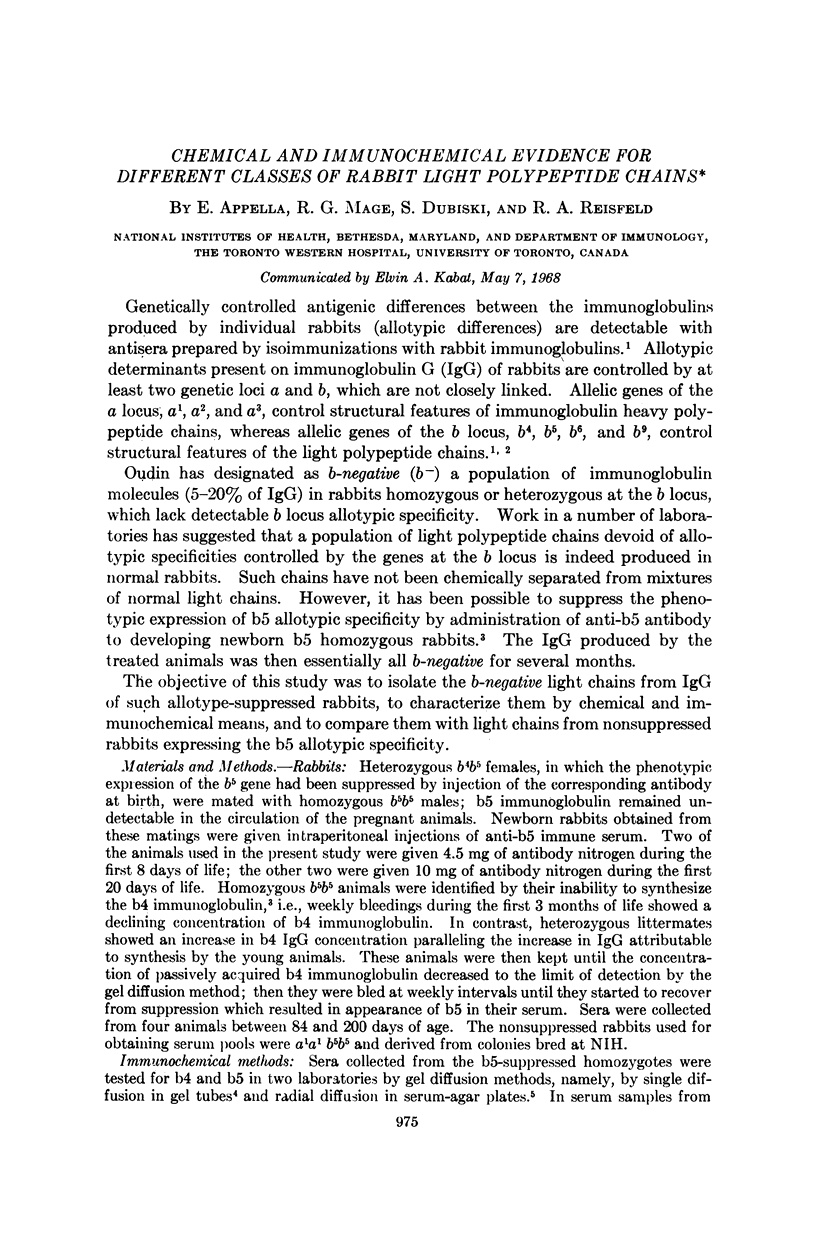
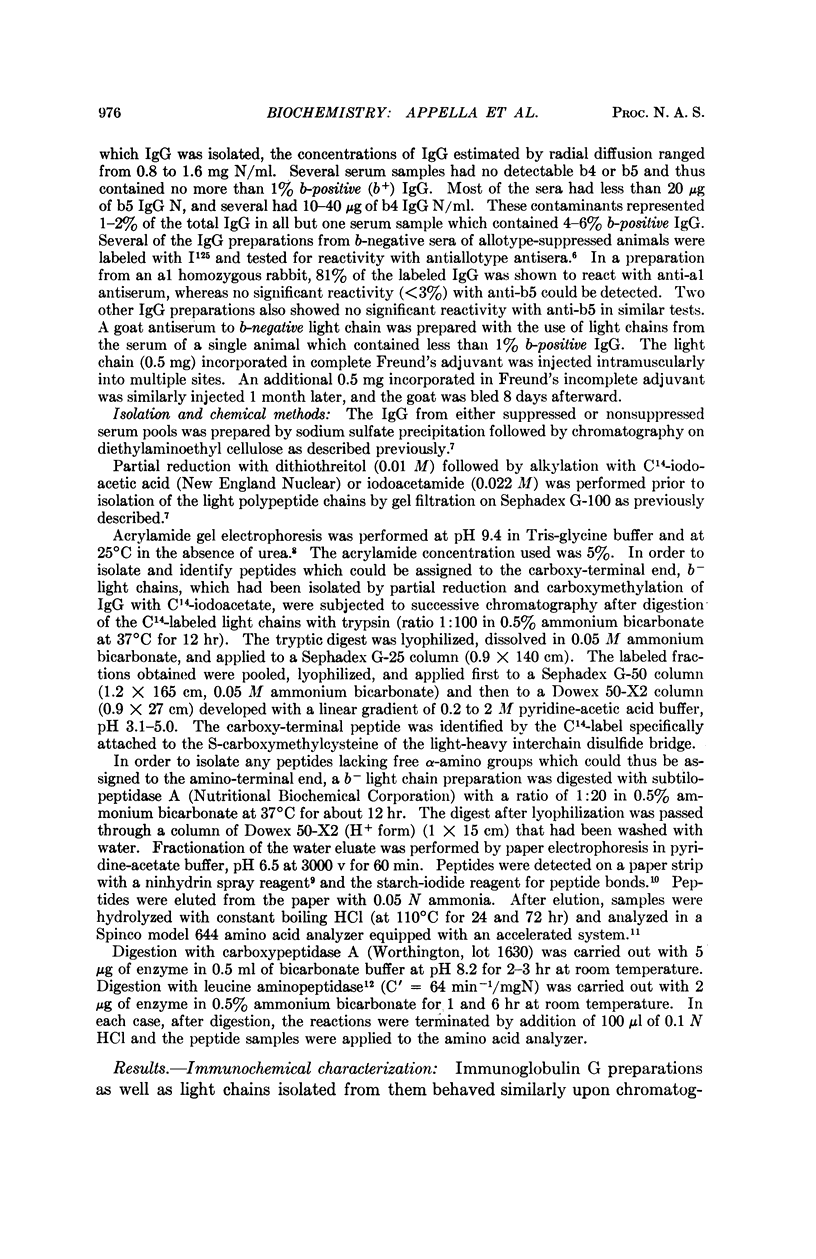
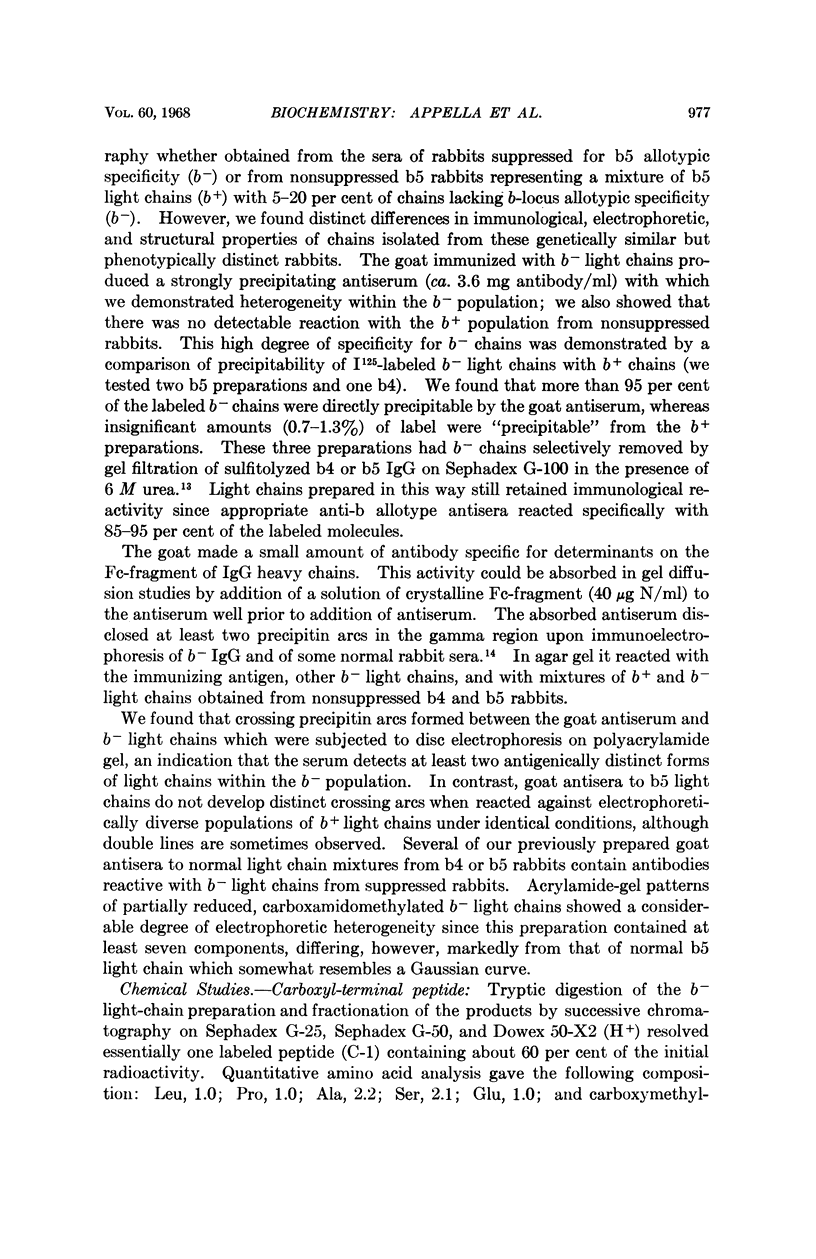
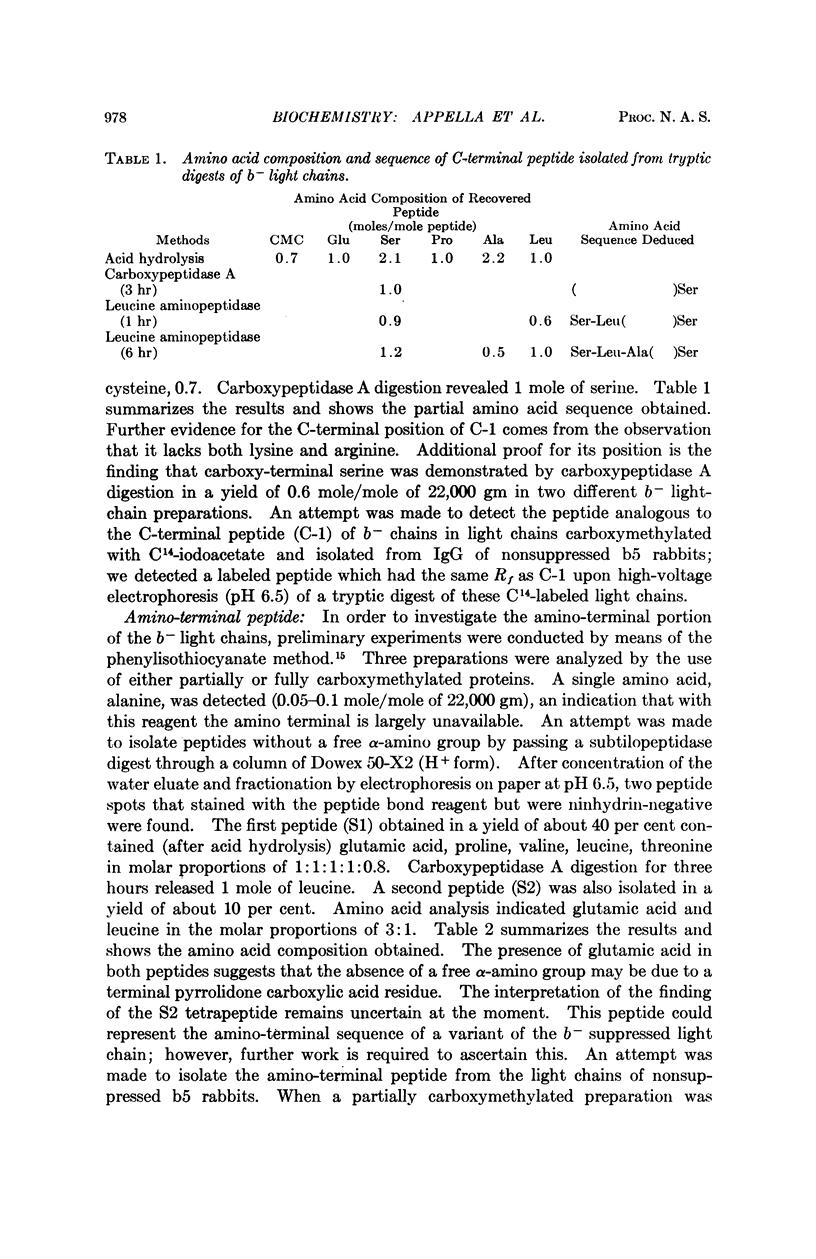
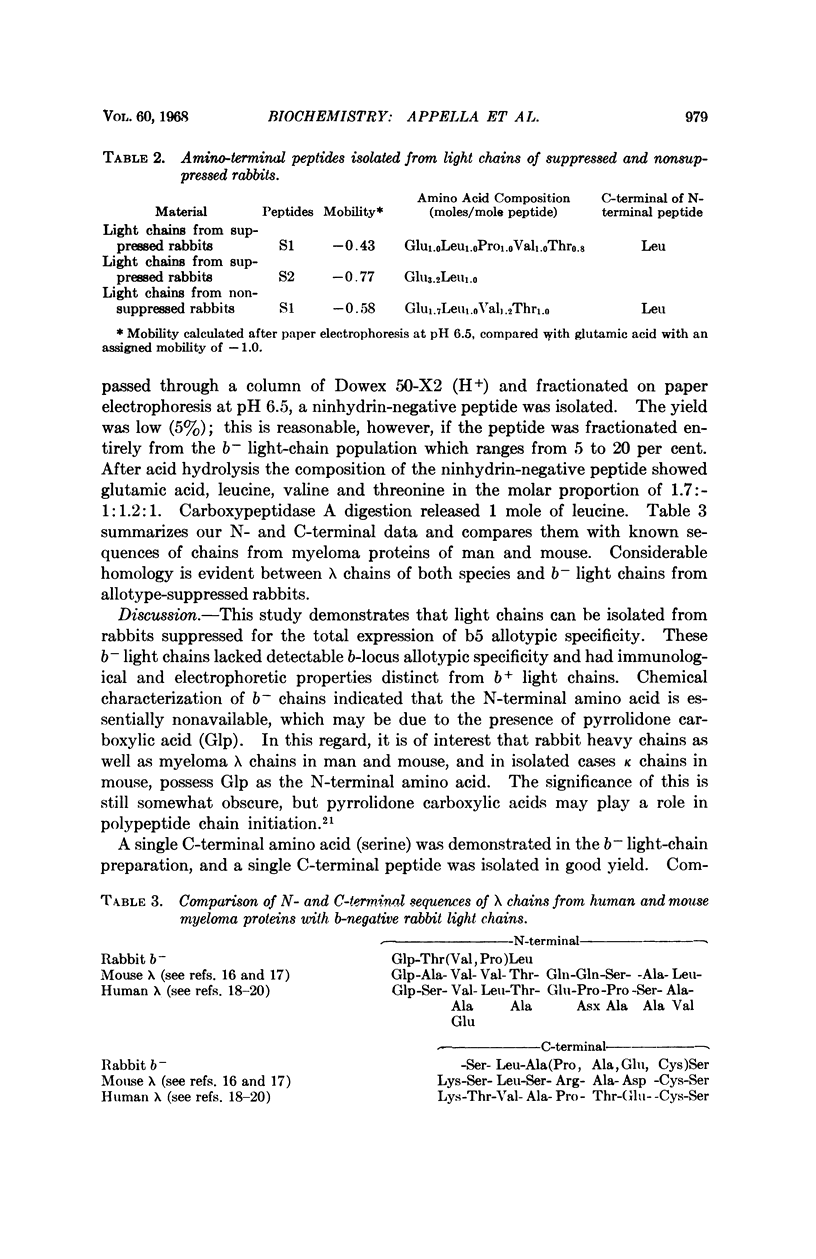
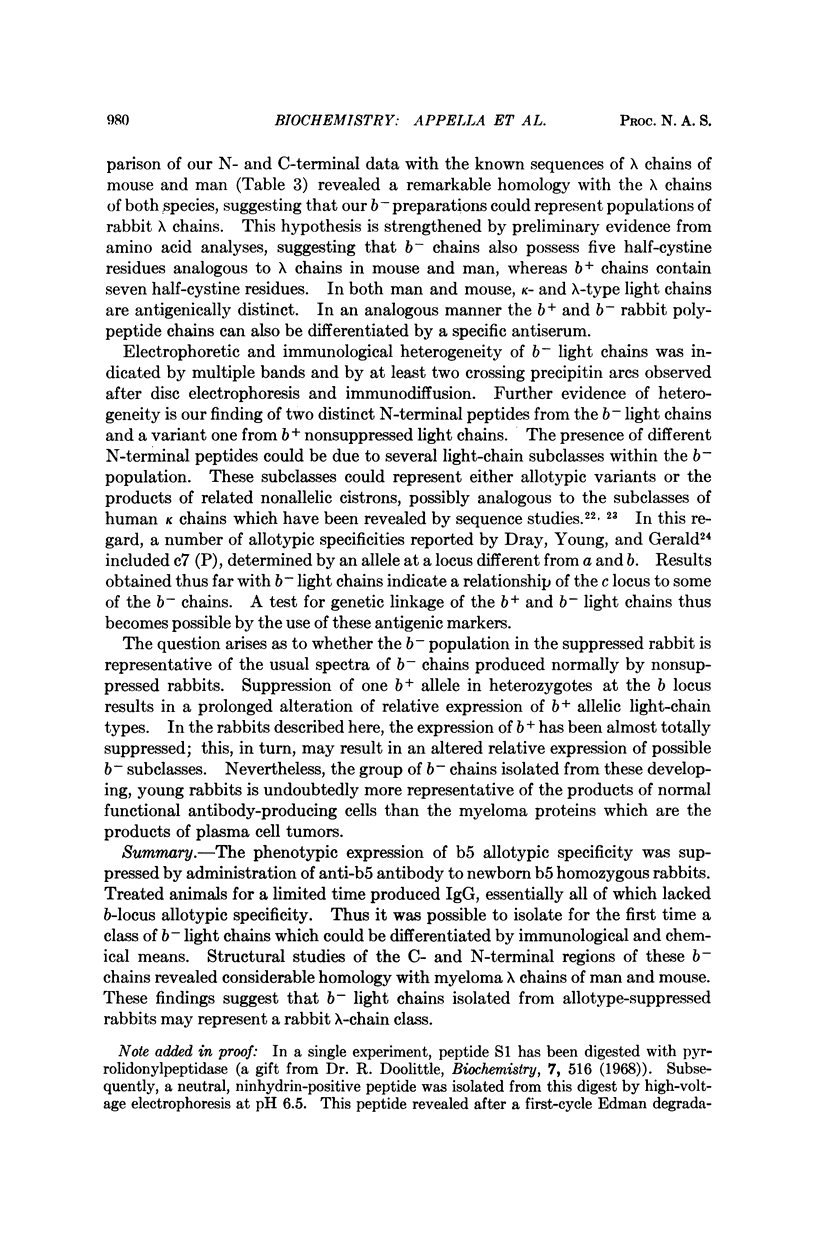
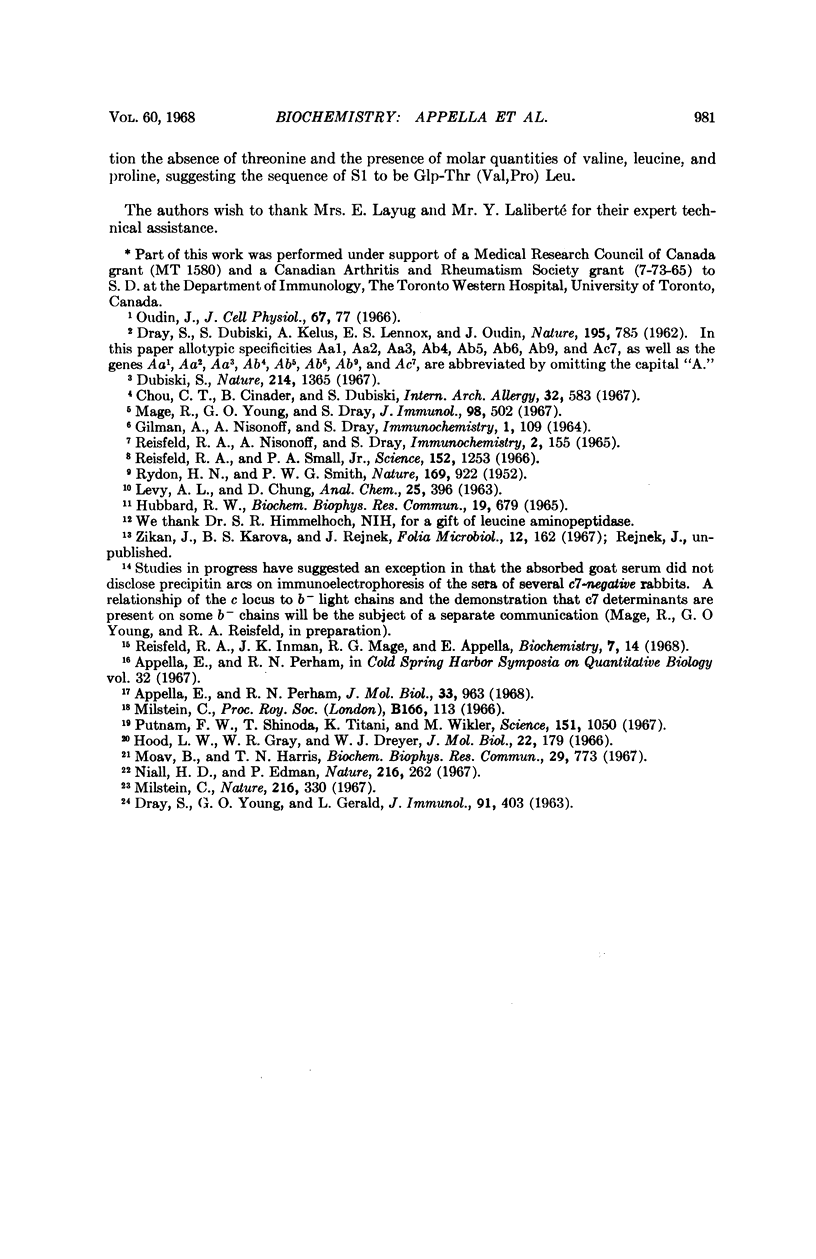
Selected References
These references are in PubMed. This may not be the complete list of references from this article.
- Appella E., Perham R. N. Amino-terminal sequences of two mouse lambda chains. J Mol Biol. 1968 May 14;33(3):963–966. doi: 10.1016/0022-2836(68)90333-1. [DOI] [PubMed] [Google Scholar]
- BREITENBACH J. W., DERKOSCH J., WESSELY F. Energetics of peptide formation. Nature. 1952 May 31;169(4309):922–922. doi: 10.1038/169922a0. [DOI] [PubMed] [Google Scholar]
- DRAY S., DUBISKI S., KELUS A., LENNOX E. S., OUDIN J. A notation for allotypy. Nature. 1962 Aug 25;195:785–786. doi: 10.1038/195785a0. [DOI] [PubMed] [Google Scholar]
- DRAY S., YOUNG G. O., GERALD L. IMMUNOCHEMICAL IDENTIFICATION AND GENETICS OF RABBIT GAMMA-GLOBULIN ALLOTYPES. J Immunol. 1963 Sep;91:403–415. [PubMed] [Google Scholar]
- Dubiski S. Suppression of synthesis of allotypically defined immunoglobulins and compensation by another sub-class of immunoglobulin. Nature. 1967 Jun 24;214(5095):1365–1366. doi: 10.1038/2141365a0. [DOI] [PubMed] [Google Scholar]
- GILMAN A. M., NISONOFF A., DRAY S. SYMMETRICAL DISTRIBUTION OF GENETIC MARKERS IN INDIVIDUAL RABBIT GAMMA-GLOBULIN MOLECULES. Immunochemistry. 1964 Jun;1:109–120. doi: 10.1016/0019-2791(64)90075-8. [DOI] [PubMed] [Google Scholar]
- Hubbard R. W. Studies in accelerated amino acid analysis. Biochem Biophys Res Commun. 1965 Jun 9;19(6):679–685. doi: 10.1016/0006-291x(65)90310-4. [DOI] [PubMed] [Google Scholar]
- Mage R., Young G. O., Dray S. An effect upon the regulation of gene expression: allotype suppression at the a locus in heterozygous offspring of immunized rabbits. J Immunol. 1967 Mar;98(3):502–509. [PubMed] [Google Scholar]
- Milstein C. Linked groups of residues in immunoglobulin k chains. Nature. 1967 Oct 28;216(5113):330–332. doi: 10.1038/216330a0. [DOI] [PubMed] [Google Scholar]
- Moav B., Harris T. N. Pyrrolid-2-one-5 carboxylic acid involvement in the biosynthesis of rabbit immunoglobulin. Biochem Biophys Res Commun. 1967 Dec 15;29(5):773–776. doi: 10.1016/0006-291x(67)90285-9. [DOI] [PubMed] [Google Scholar]
- Niall H. D., Edman P. Two structurally distinct classes of kappa-chains in human immunoglobulins. Nature. 1967 Oct 21;216(5112):262–263. doi: 10.1038/216262a0. [DOI] [PubMed] [Google Scholar]
- Putnam F. W., Shinoda T., Titani K., Wikler M. Immunoglobulin structure: variation in amino acid sequence and length of human lambda light chains. Science. 1967 Sep 1;157(3792):1050–1053. doi: 10.1126/science.157.3792.1050. [DOI] [PubMed] [Google Scholar]
- Reisfeld R. A., Dray S., Nisonoff A. Differences in amino acid composition of rabbit gamma-G-immunoglobulin light polypeptide chains controlled by allelic genes. Immunochemistry. 1965 Jun;2(2):155–167. doi: 10.1016/0019-2791(65)90017-0. [DOI] [PubMed] [Google Scholar]
- Reisfeld R. A., Inman J. K., Mage R. G., Appella E. Chemical and immunochemical characterization of electrophoretic subfractions of rabbit gammaG-immunoglobulin light chains with b4 allotypic specificity. Biochemistry. 1968 Jan;7(1):14–24. doi: 10.1021/bi00841a003. [DOI] [PubMed] [Google Scholar]
- Reisfeld R. A., Small P. A., Jr Electrophoretic heterogeneity of polypeptide chains of specific antibodies. Science. 1966 May 27;152(3726):1253–1255. doi: 10.1126/science.152.3726.1253. [DOI] [PubMed] [Google Scholar]
- Zikán J., Skárová B., Rejnek J. Two structurally different types of rabbit light chains. Folia Microbiol (Praha) 1967;12(2):162–174. doi: 10.1007/BF02896878. [DOI] [PubMed] [Google Scholar]


